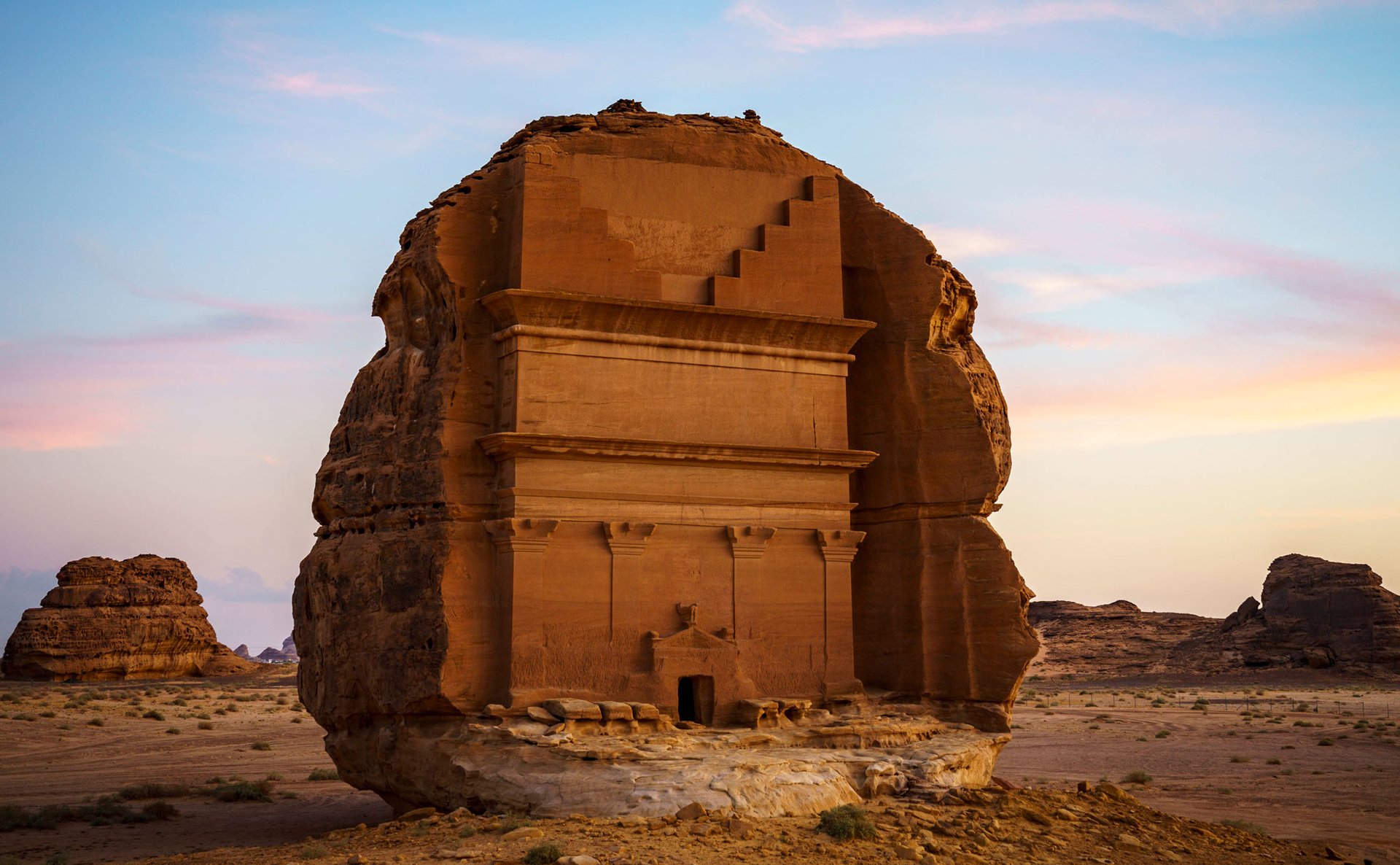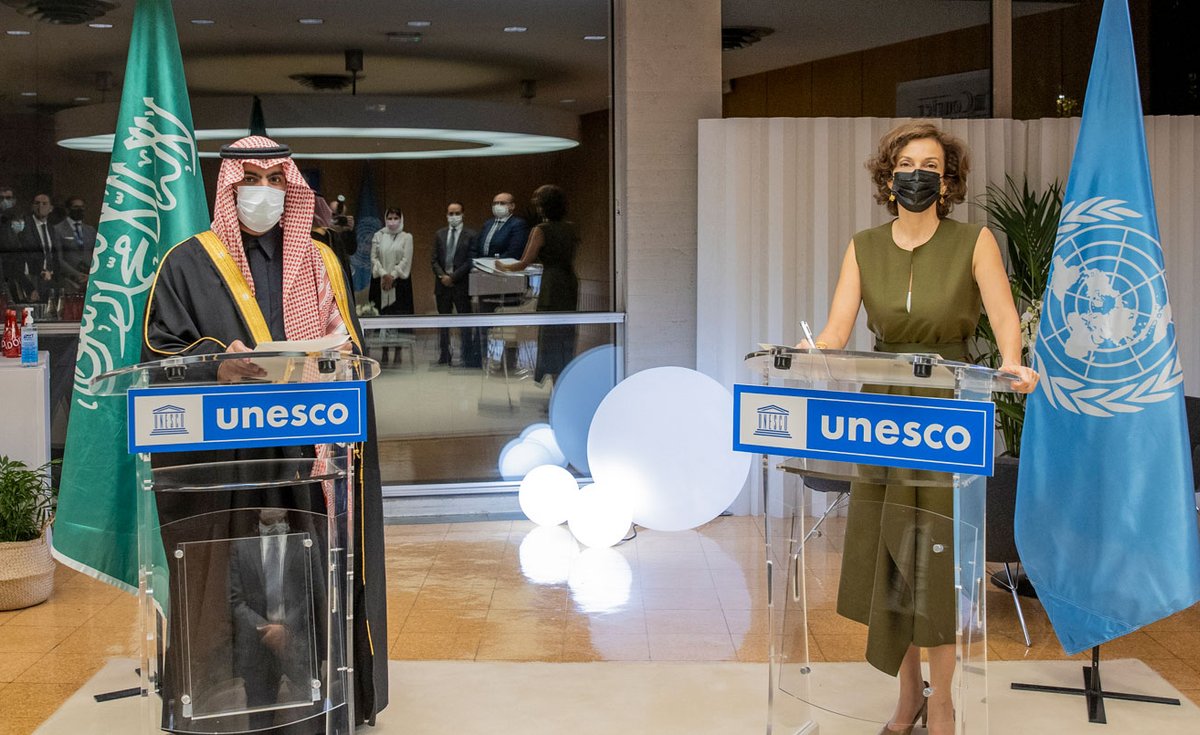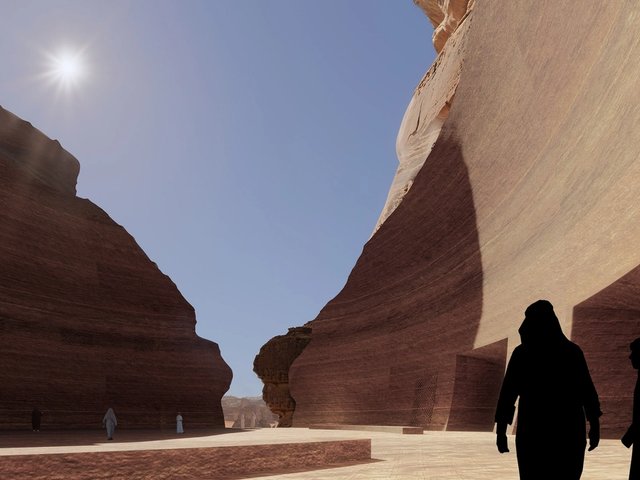The Royal Commission of AlUla (RCU) signed a five-year memorandum with Unesco on Tuesday in Paris paving the way for a “strategic cross cultural partnership” for the development of the culturally significant Saudi Arabian province. The document was signed by Audrey Azoulay, Unesco’s director-general; Prince Badr bin Abdullah Al-Saud, the governor of AlUla and the Saudi minister of culture; Princess Haifa Al Mogrin, the Saudi ambassador to Unesco; and Amr AlMadani, the chief executive of the province’s Royal Commission.
The agreement covers two programmes, the first steps in a long-term strategy. Saudi Arabia will implement a two-year partnership under Unesco’s Memory of the World Programme, promoting written heritage in the Arab world and the country, which is rich with petroglyphs representing people and animals. The Saudis will also provide support for five eight-month fellowships for young archaeologists, starting in March 2022. The province says it has already granted more than 400 fellowships abroad for students of agronomy and sustainable development and even chefs, who were sent to a Paris culinary school. Other future programmes with Unesco will focus on the creation of biosphere reserves, geological parks (Geoparks) and the listing of intangible heritage traditions. Budgets for these have not yet been revealed.
In September the RCU signed another wide-ranging agreement with an NGO, the International Union for Conservation of Nature (IUCN).
UN agencies normally make partnership agreements with national governments, not provincial bodies, so the agreement with the RCU underlines the importance Crown Prince Muhammad bin Salman is giving to the creation of a cultural and tourist landmarks in his country. The prospects for biosphere reserves and Geoparks have also been reinforced by the recent extension of the 22,000 sq. km province to include the oasis of Tayma, and the ancient settlement of Khaybar, which is close to a dramatic white volcanic landscape.
Saudi representatives say the agreement marks the will to make AlUla a model of “sustainable development in the Middle East” and “a global laboratory with Unesco support”. AlUla is the seat of several ancient civilisations, spanning 200,000 years.

The ancient site of Hegra (also known as Al-Hijr) became the first Unesco World Heritage Site in Saudi Arabia in 2008 © Jonathan Irish
At the end of the summer, archaeologists and curators began resuming their work at nine archaeological digs and four conservation missions in the province, while the RCU is working with a French agency on the creation of a network of museums.
The AlUla Kingdoms Institute and its museum is scheduled to open to the public in 2030, next to the archaeological site of Dadan, and the region aims to draw 835,000 tourists a year by 2035.The RCU has signed an agreement with the French hotel group Accor to double its hospitality capacity and the Saudi airline Flynas has begun the first international flights to AlUla, from Dubai and Kuwait. In the longer term, the Saudis hope to welcome two million tourists a year, but they pledge to “maintain sustainability and protection of the sites as the guiding force” in developing tourist capacity.
In 2008, the spectacular Nabataean monuments and pre-Nabataean site of Hegra (Al-Hijr) became a Unesco World Heritage Site. Saudi Arabia, which became member of Unesco’s Executive Board two years ago, has also expanded its influence and financial support at the Paris-based agency.




